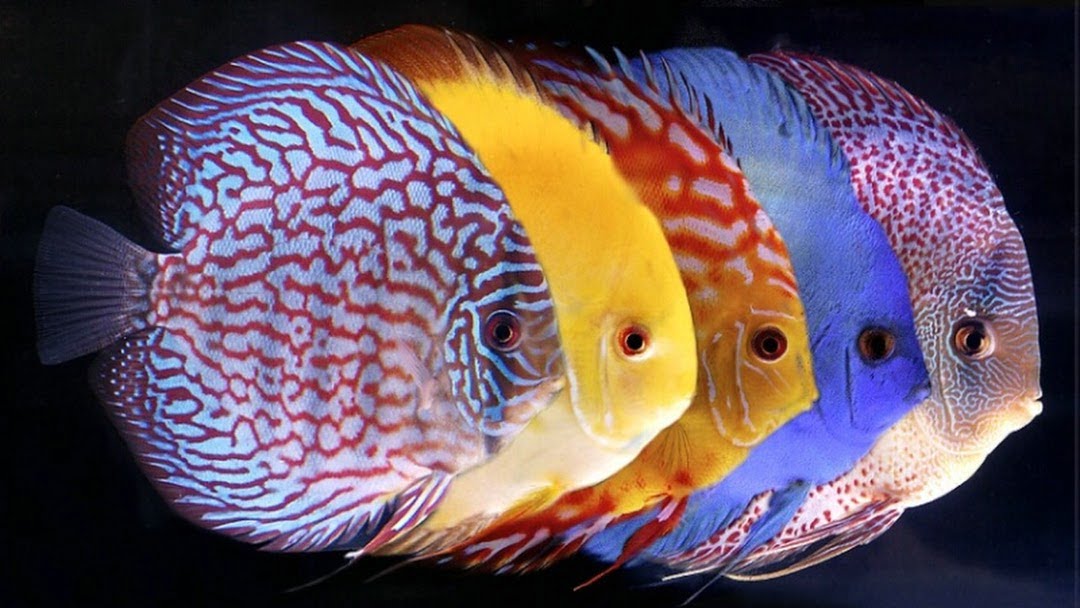Discus fish are popular among aquarists due to their vibrant colors and unique disc-shaped body. They are native to the Amazon River Basin in South America and require specific water conditions to thrive. Discus fish are peaceful and social creatures, and they thrive in groups of six or more. To keep discus fish healthy in your home aquarium, you must provide them with a suitable tank setup, proper water conditions, and adequate nutrition.
Tank Setup and Maintenance
A suitable tank setup for discus fish should be at least 50 gallons or more, with a height of 18-24 inches. Discus fish prefer soft, slightly acidic water with a pH between 6.0 and 7.5. The water temperature should be kept between 82-86°F to mimic the natural habitat of discus fish. Filtration is critical in maintaining water quality in the tank, and a canister filter or sponge filter is recommended for discus fish.
To maintain the water quality, it is essential to perform regular water changes of 25% to 50% every week. Overfeeding can lead to poor water quality and health problems, so it is best to feed your fish small amounts of food several times a day.
Choosing the Right Tankmates & Ensuring Compatibility
Discus fish are peaceful and can be kept with other peaceful community fish that share similar water requirements. Avoid keeping aggressive fish with them, as they may become stressed or bullied. Suitable tankmates for discus fish include cardinal tetras, rummy nose tetras, and dwarf cichlids.
When introducing new fish to your discus tank, it is essential to quarantine them for two to four weeks to ensure they are healthy and disease-free. Discus fish are susceptible to stress, which can lead to disease, so it is crucial to ensure they are compatible with their tankmates and live in a stress-free environment.
Feeding & Nutritional Needs
Discus fish are omnivores and require a balanced diet of protein-rich foods, including brine shrimp, bloodworms, and high-quality pellets. It is best to feed them small amounts of food several times a day, rather than a large meal once a day. Overfeeding can lead to poor water quality, which can cause health problems for discus fish.
Supplementing their diet with live or frozen food will enhance their color and keep them healthy. It is also essential to provide them with a varied diet to ensure they receive all the necessary nutrients.
Some common diseases that can affect discus fish
- Hole-in-the-Head Disease (Hexamita): This is a parasitic disease that can cause pitting and erosion on the fish’s head and body. It is often associated with poor water quality and stress.
- Fin Rot: Fin rot is a bacterial infection that can result in the deterioration of a fish’s fins. It is often a secondary infection caused by stress, poor water conditions, or injuries.
- Ich (Ichthyophthirius multifiliis): Also known as white spot disease, ich is a protozoan parasite that causes small white cysts to appear on the fish’s body and fins. It can be a result of stress or poor water quality.
- Velvet Disease (Oodinium): Velvet disease is another parasitic infection that gives the fish a dusty or velvety appearance. It can lead to skin and gill irritation, labored breathing, and lethargy.
- Gill Flukes: Gill flukes are parasitic worms that attach to the gills of the fish, causing respiratory problems and irritation. Infected fish may exhibit rapid gill movement and gasping at the water’s surface.
- Internal Parasites: Various internal parasites can affect discus fish, leading to issues like bloating, weight loss, and general debilitation.
- Skin and Gill Flukes: Flukes are flatworm parasites that can attach to the skin and gills of the fish, causing irritation and damage.
- Columaris (Mouth Fungus): This bacterial infection often starts around the fish’s mouth, causing white patches or a cottony appearance. It can quickly spread to other parts of the body.
- Stress-Related Diseases: Discus fish are particularly sensitive to stress, and stress can lead to various health problems. Sudden changes in water parameters, overcrowding, or aggressive tankmates can stress these fish.
5 Best Practices When Breeding Discuss
Breeding discus fish requires careful planning and preparation. Here are five best practices to follow when breeding discus fish:
- Selecting breeding pairs: Choose healthy adult discus fish that are compatible and have displayed breeding behavior.
- Setting up a breeding tank: A separate breeding tank should be set up with appropriate water conditions and a flat surface for the discus to lay their eggs.
- Conditioning the breeding pairs: Before breeding, it is essential to condition the breeding pairs with high-quality food and increase the water temperature to 86°F.
- Monitoring the breeding process: Discus fish are dedicated parents and will guard their eggs and fry. Monitor the breeding process closely and remove any unfertilized eggs or dead fry.
- Raising the fry: After hatching, the fry will consume their yolk sacs for the first few days. Once they are free-swimming, feed them freshly hatched brine shrimp or liquid fry food several times a day.
In conclusion, keeping discus fish healthy and thriving in your home aquarium requires attention to their specific water requirements, suitable tankmates, a balanced diet.
